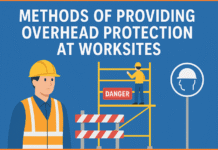Contents
Introduction to OSHA’s Concept of a Competent Person
The Occupational Safety and Health Administration (OSHA) plays major role in ensuring workplace safety and health standards across various industries. OSHA’s guidelines are designed to prevent work-related injuries, illnesses, and fatalities by enforcing regulations and providing necessary training and education. A crucial aspect of these guidelines is the designation of a ‘competent person’ within the workplace.
According to OSHA, a ‘competent person’ is defined as someone who is capable of identifying existing and potential hazards in the work environment and who has the authority to take prompt corrective measures to eliminate these hazards. This dual criterion underscores the importance of both expertise and empowerment in maintaining a safe workplace. The ability to recognize hazards requires substantial knowledge and experience, while the authority to address these hazards ensures that necessary actions can be taken immediately to mitigate risks.
The presence of competent persons on-site is indispensable for ensuring a safe working environment. These individuals act as the first line of defense against workplace hazards, proactively identifying and addressing safety concerns before they escalate into serious issues. By having competent persons readily available, employers can significantly reduce the likelihood of accidents and improve overall workplace safety. This not only protects employees but also enhances productivity and compliance with OSHA regulations.
In summary, OSHA’s concept of a competent person is integral to fostering a culture of safety within the workplace. By understanding and implementing the criteria that define a competent person, organizations can ensure that they are well-prepared to identify and address potential hazards, thereby creating a safer and more efficient work environment for all employees.
Identifying Hazards: The First Criterion of Competency
One of the primary responsibilities of a competent person, as defined by OSHA, is the ability to identify existing and predictable hazards in the workplace. This criterion is fundamental for ensuring a safe working environment. Hazards can manifest in various forms, including unsanitary conditions, hazardous materials, or dangerous situations that could potentially harm employees. Recognizing these threats is crucial for preventing workplace accidents and injuries.
Hazards can be broadly categorized into three types: physical, chemical, and biological. Physical hazards include unsafe conditions such as unguarded machinery, exposed electrical wiring, and structural instabilities. For instance, a competent person should be able to identify a scaffold that is not properly secured or an area with insufficient lighting that could lead to trips and falls.
Chemical hazards involve the presence of harmful substances like toxic fumes, flammable liquids, or corrosive materials. An example of this would be identifying a storage area where chemicals are not properly labeled or where there is inadequate ventilation, posing significant health risks to those exposed.
Biological hazards refer to organisms or organic materials that can cause health issues, such as bacteria, viruses, and mold. In environments like healthcare facilities or laboratories, a competent person must recognize the presence of biohazards and ensure that proper protocols are followed to mitigate exposure risks.
The importance of hazard identification cannot be overstated. It serves as the cornerstone of workplace safety by allowing proactive measures to be taken before an incident occurs. A competent person’s expertise and experience are invaluable in this process. They utilize their knowledge to foresee potential risks and implement effective control measures, thereby safeguarding the health and well-being of all employees.
By diligently identifying and addressing hazards, a competent person plays a crucial role in maintaining a safe and compliant workplace. Their ability to predict and mitigate risks is essential for preventing accidents and ensuring that all safety regulations are adhered to.
Authority and Responsibility: Taking Corrective Measures
In the context of OSHA regulations, a competent person’s role is not only to identify hazards but also to take prompt corrective measures to ensure workplace safety. This authority is crucial as it empowers the competent person to act immediately, mitigating risks before they escalate into serious incidents. The ability to implement changes swiftly is fundamental to maintaining a safe working environment and protecting the well-being of all employees.
The range of corrective measures that a competent person may take includes adjusting work procedures to eliminate or reduce hazards. For instance, if a particular task poses a significant risk due to improper handling techniques, the competent person has the authority to modify the procedure, ensuring that it is performed in a safer manner. This may involve revising protocols, introducing new methods, or altering the sequence of operations to minimize potential dangers.
Another critical responsibility is providing additional training to workers. When a competent person identifies that employees lack the necessary knowledge or skills to perform their tasks safely, they can arrange for immediate training sessions. This ensures that all workers are well-informed about safety practices and are capable of executing their duties without putting themselves or others at risk. Training can cover a wide range of topics, including the proper use of equipment, hazard recognition, and emergency response procedures.
Furthermore, the competent person has the authority to mandate the use of personal protective equipment (PPE) when necessary. If a hazard cannot be entirely eliminated through procedural changes or training, PPE serves as the last line of defense. The competent person ensures that appropriate PPE is available, that it is used correctly, and that it provides adequate protection against identified risks.
In essence, the competent person plays a pivotal role in enforcing safety protocols and ensuring adherence to them. Their ability to take immediate corrective action is vital in creating a safe work environment, preventing accidents, and fostering a culture of safety within the organization.
Training and Experience: Building Competency
Training and experience are fundamental pillars in the development of a competent person under OSHA’s standards. Achieving competency requires a combination of formal education, practical training, and hands-on experience. Various training programs and certifications are available, tailored to the specific needs of different industries. These programs often include courses on hazard recognition, safety regulations, and emergency response procedures, providing a comprehensive foundation for individuals aiming to become competent persons.
Certifications such as the OSHA 30-hour Construction Safety and Health or the OSHA 30-hour General Industry certifications are widely recognized and respected. These programs cover essential aspects of workplace safety, equipping participants with the knowledge to identify potential hazards and implement effective corrective measures. Additionally, industry-specific certifications, such as those offered by the National Safety Council or American Society of Safety Professionals, further enhance an individual’s expertise in niche areas.
Experience plays a critical role in building competency. On-the-job training allows individuals to apply theoretical knowledge in real-world scenarios, fostering the development of practical skills. Experienced workers can identify hazards more effectively, make informed decisions, and take swift corrective actions. Mentorship programs, where less experienced workers learn from seasoned professionals, can be particularly beneficial in transferring knowledge and skills.
Ongoing education and professional development are vital for maintaining and enhancing competency. Safety standards and regulations evolve, and continuous learning ensures that individuals remain up-to-date with the latest industry practices. Attending workshops, seminars, and refresher courses helps in staying informed about new technologies and methodologies in safety management.
The benefits of having well-trained, experienced individuals in the workplace are manifold. Improved safety outcomes, reduced accident rates, and enhanced compliance with OSHA regulations are direct results of a competent workforce. Moreover, businesses can expect increased productivity and morale, as employees feel more secure and valued in a safe working environment.





